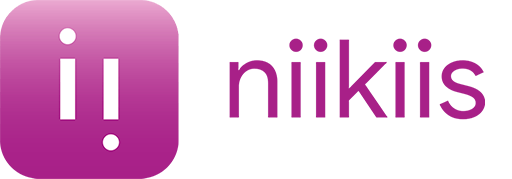There is a crisis of commitment in the hospitality industry, turnover is very high and loyalty has become a necessity. Faced with this, there is an important need to implement strategies to understand people's needs, offer them benefits that go beyond salary and make them want to stay with us. Stay for this interview and learn the keys to compensation and loyalty of workers in the hospitality sector with Guillermo Rademakers: Vice President of Total Rewards at Accelya, with years of experience in the sector in terms of compensation and digital transformation.
Hello, Guillermo. Thank you for being with us today. In the context of continuous performance management, how can hospitality leaders balance the need to provide constant feedback with the importance of maintaining a positive work environment without unnecessary pressure?
The hospitality industry in its holiday segment is characterized by 24×7 seasonal or year-round operations, where the hotel product is defined for each team through a narrative with a tone of voice, translated with procedures and standards. But the day-to-day combines the execution of these with the management of exceptions and interpretation for a service that creates experiences for guests.
Performance management needs to combine continuous training in the evolution of procedures and standards, as well as feedback on what has happened. For his own professional development, the employee needs a contextualization of what and how, aligned with the purpose, the why in order to establish criteria in his decision making. They need to understand, to unlearn and learn, which could be stressful if not facilitated by a constructive and positive leadership style. In addition, customer satisfaction is one of the best business cards of any establishment, since it facilitates repetition and positive references, which are the key to differentiation and alignment with market positioning.
For these reasons, performance management is so crucial in a service-focused operation, in a changing environment, and one that is accustomed to having a wide diversity of guests, unique individuals. The employee is often at the center, as anyone can be representing the entire team and the facility when interacting with the guest. The keys are to understand and align with the values and culture, to have a compass to guide decision making, to understand how their performance impacts results, and to feel involved in continuous improvement. Culture and leadership style are ultimately the key to balancing performance management feedback so that it cannot erode employee engagement.
Technology and Performance Management
Could you highlight some technology tools that you would recommend to optimize performance management in hospitality? Also, how can these tools benefit both workers and leaders and managers?
The hospitality sector is characterized by having employees whose workstation does not always include a digital desktop (devices such as tablet, mobile or computer), since in most cases their activity is related to the operation, in kitchens, restaurants, on floors, at the reception, in maintenance, in the commissary, in common areas, and a long etcetera. But this does not mean that they live in isolation from technology, since the digital transformation arrived some time ago, and it has become more and more accentuated . Climate and opinion surveys have given way to more frequent and thematically focused surveys, recognition tools, 360° evaluations, the presence of totems or digital kiosks for access to the Intranet portal, hybrid training combining knowledge pills, virtual tutorials and face-to-face actions are just a few examples.
On the performance side, it is common for managers to have access to a scorecard with indicators on the operation, and they can visualize the level of guest satisfaction by areas, which provides them with more information to contextualize and qualify the content of the feedback in performance management. Physical bulletin boards or suggestion boxes are no longer expected to be the only channels of communication through middle management.
Performance management is so crucial in a service-driven operation, in a changing environment, and in an environment that is used to having a great diversity of guests, unique individuals. The employee is often at the center, as anyone can be representing the entire team and the facility when interacting with the guest. The keys are to understand and align with the values and culture, to have a compass to guide decision making, to understand how their performance impacts results, and to feel involved in continuous improvement. Culture and leadership style are ultimately the key to balancing performance management feedback so that it cannot erode employee engagement.
Multigenerational Commitment
Could you share specific examples of training programs or strategies that have proven to be effective in improving collaboration and engagement in multigenerational teams in the hospitality industry?
There are very interesting examples where professional development for employees leverages multigenerationality. An example of a program would be the teams of internal trainers. The need for continuous training, or to support the welcoming process, is leveraged on expert employees of the operation, who with the development competencies for other employees are levers of change and standardization. Another would be reverse mentoring, where professionals with greater capabilities in digital transformation carry out development actions for professionals with a gap in these competencies. Another program of interest is the recognition of values, which generally has a nomination aspect, or an assessment made by colleagues, where ambassadors of each value are identified, either individually or by a team.
In the context of generational diversity, how can hospitality leaders adapt their strategies to meet the expectations and work styles of employees belonging to different generations?
Diversity is something that transcends age, so it requires a culture and leadership style in the organization that is truly inclusive and respects diversity holistically. Each employee is unique in their interests, motivations, values and leadership style, and these evolve over time. Strategies to meet expectations require knowing people, and providing them with an environment in which their contributions are positively recognized and aligned with the organization's purpose. In this way, giving autonomy in execution, on the basis of values with which they identify, is when the culture is lived authentically, generating a more rewarding work environment that fosters individual development as well as that of the organization. Differences in ways of working are integrated because the purpose and culture are internalized. The key is not simply to consider an approach by segmentation of the group, but to go beyond that to have a situational leadership and/or leader-coach that puts the employee at the center and articulates its management according to their capabilities, skills, knowledge and experience in the context of the situation and the strategic plan of the hotel product in its attributes of narrative and tone of voice. It is necessary to know the person and understand his or her professional and vital moment, if the aim is to have more efficiency and effectiveness in management, in order to achieve a greater impact on engagement.
Worker welfare
What do you see as the fundamental role of workplace wellness in retaining talent in hospitality? And how can companies create environments that promote the mental and physical health of their employees?
Well-being is the dimension that has been prioritized the most since the pandemic, as its relevance has been highlighted, generating great awareness, independently of demographic variables. Obviously, this does not mean that a one-size-fits-all solution can be used, since needs are multiple according to each case. It is necessary to consider which are the expectations and dimensions that are integrated when we talk about well-being.
On the one hand, there is physical wellness, which has traditionally been associated with health insurance (in the form of medical insurance or reimbursement). Physical wellness is understood as any program or solution that takes into consideration how the employee's health is cared for. Obviously there are different perspectives in the organization, such as Occupational Risk Prevention to ensure that a safe environment is provided, communication and training initiatives to generate awareness in these aspects, but they are no longer considered sufficient, as there are many collaborators who consider it interesting to complement with programs to improve healthy habits, such as nutrition, sleep quality, and even working against the sedentary nature of many positions. The improvements of digitalization have been the emergence of video consultations with health professionals, and knowledge pills to promote healthy habits, and even gamification with the creation of thematic communities.
On the other hand, there is mental well-being, a subject that to some extent evidenced a certain perception of taboo or stigma. The pandemic has highlighted the normalization of psychologist support for situations of burnout, depression, anxiety, or simply needing support. This type of service has been one of the most demanded with a very significant growth with applications with video consultations, or that facilitate access to therapy with professionals, combined with knowledge pills to generate awareness or improve healthy habits, in relation to practices such as meditation, mindfulness among others.
Finally, there is the dimension of financial wellbeing, which combines the need to improve training and awareness of individual financial management, improved understanding of payroll, or aspects to encourage savings. Among the elements that have traditionally been included under this heading would be retirement savings plans or flexible remuneration plans to be able to adapt how compensation is perceived and to obtain discounts and tax advantages. Currently, on-demand payroll services have been incorporated, to bring forward the payment of work already accrued, or tax advisory services.
Diversity is something that transcends age, so it requires a culture and leadership style in the organization that is truly inclusive and respects diversity holistically. Each employee is unique in their interests, motivations, values and leadership style, and these evolve over time. Strategies to meet expectations require knowing people, and providing them with an environment in which their contributions are positively recognized and aligned with the organization's purpose.
Evaluation in compensation
Let's talk about the evolution in compensation. Can you provide specific examples of non-monetary benefits that have proven to be effective in increasing team satisfaction and engagement?
Total compensation is the great workhorse for improving internal equity and competitiveness, just as, with legislative changes, much emphasis has been placed on ensuring greater pay transparency and improving the pay gap. But beyond the economic aspect in its concepts of gross salary and variable remuneration are the benefits, some with a direct economic cost, but others without an economic nature and with a certain degree of acceptance.
Time flexibility, where it is possible to have an entry and exit time slot, or even a lunch break. Spatial flexibility in terms of being able to work remotely, the possibility of having more vacation days, are examples that approach work-life balance from a differentiation perspective. The possibility of having payroll advances for accrued time or flexible compensation that allows you to choose how to receive part of your compensation or to exchange benefits of similar cost, are programs that demonstrate the desire to evolve towards personalization of the employee's experience.
There are also programs in which the company gives time to carry out corporate social responsibility actions, or encourages the identification of internal trainers, or reverse mentoring, in pursuit of a closer professional development. Another example of a benefit program for companies with an international presence is to allow home exchanges between employees in order to get to know other cultures. There are also programs to promote a more sustainable mobility, in which employees are facilitated to share space to go together in the same vehicle.


 Employee database
Employee database  Documents and e-signature
Documents and e-signature  Reporting and analytics
Reporting and analytics  Payroll and incidents
Payroll and incidents  Time and Attendance Software
Time and Attendance Software  Shifts and task list
Shifts and task list  Absences & time-off
Absences & time-off  Workflows
Workflows  Expense management
Expense management  Recruitment and selection software
Recruitment and selection software  Onboarding
Onboarding  Training and procedures
Training and procedures  Internal communication
Internal communication  Performance assessment software
Performance assessment software  HR surveys and forms
HR surveys and forms  Chatbot
Chatbot 